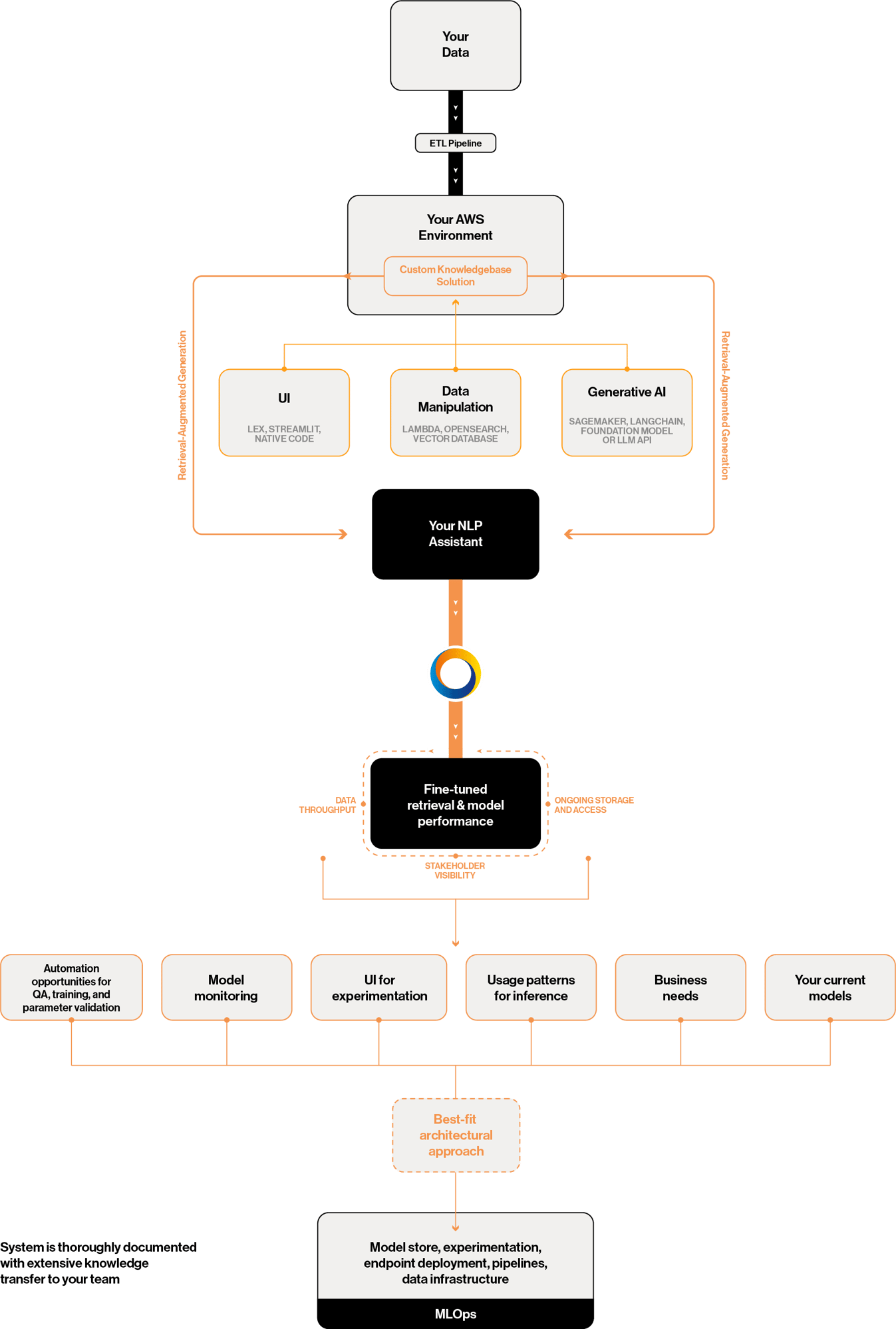Knowledge
Management: Chatbots, Assistants, & Knowledgebases

What Can Generative AI Do for Your Knowledge?
All businesses have institutional knowledge that goes unused. It may be siloed, trapped by organizational complexity, or hidden in labyrinthine storage and management layers. Reorganizing into a single system often isn’t realistic or even advisable. But with the advent of generative AI, it is now possible to query this knowledge from a single UI by having a natural language conversation with a chatbot or assistant.
AI-assisted knowledge retrieval is layman-friendly, adaptable, and can even synthesize new knowledge by cross-referenced extrapolation. With AWS services like Amazon Lex, Amazon SageMaker, and AWS Lambda in combination with open source agentic frameworks like LangChain and techniques like retrieval-augmented generation, AI-powered platforms can disseminate organizational knowledge more effectively than ever.
Am I a fit for Generative AI?
Common Verticals
-
Professional Services
-
Software
& SaaS -
Retail &
eCommerce -
Media &
Entertainment -
Marketing &
Advertising -
Healthcare &
Life Sciences -
Education &
e-Learning -
Fintech & Finance
Solution Fit Criteria
- Your business relies on marshaling document-based or unstructured data
- This data lives in different systems
- There is no single, useful way to query it
- Data accessibility has a direct impact on revenue
- You need something more flexible than SQL for leveraging your data
- You need to expand access to non-technical roles
- Natural language querying is suited to your data types and uses
- Collecting and analyzing user queries is a revenue opportunity
- You need to provide more comprehensive customer support
- Automating as you scale is a priority
- You have common request patterns
- You’d like to better contextualize your existing automated answers
- You want to subsidize your support agents’ knowledge
Benefits of Knowledge Management with Generative AI
-
Enhanced User Experience
Offer intuitive and human-like interactions
-
Operational Efficiency
Reduce manual effort associated with knowledge work
-
Continuous Learning
Adapt and grow based on user interactions and feedback
-
Knowledge Synthesis
Take discrete data and cross-reference to generate new knowledge
-
Data-Driven Insights
Collect analytics on knowledge searching and use
Our process


Get Your Pilot Launched
Over a 4 to 6 week period, we’ll construct an engagement to get you up and running. By the end, you’ll have a pilot solution deployed in your environment that’s been designed to accomplish your objectives and demonstrate the potential of a fully scaled architecture.
Design Workshop
(1-2 weeks)
Pilot Deployment
(3-4 weeks)
At the end of the design phase, you get:
- Data and infrastructure design
- Use case prioritization and roadmap
- Defined business use case
- Defined success criteria
- A proposed candidate solution for the minimum viable product
- A high-level solution architecture using AWS services 3rd party software (foundation models)
- A development plan for the Pilot Deployment
- Preliminary TCO estimates
At the end of our Pilot phase, you get:
- A pilot deployed in your AWS development environment
- The solution architecture documentation
- A plan to build for scale as a production-ready solution
- A refined TCO estimate for AWS and 3rd party services
- A summary of success criteria met and recommendations for “go/no-go”

